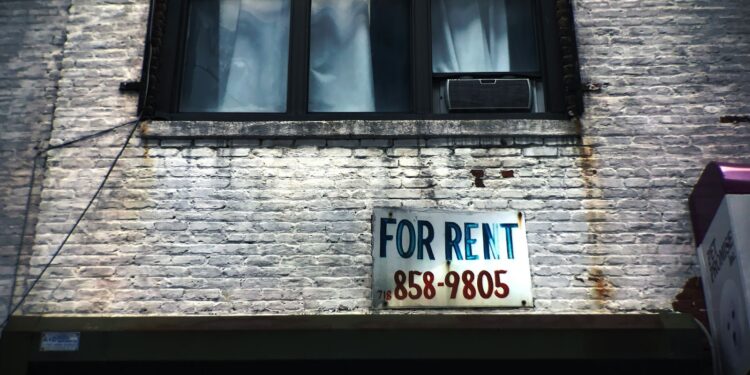Profitability is an issue that becomes important when considering investing in rental properties, as it could generate a reliable passive income over time. It is important, however, to be aware of what is most important before stepping into the real estate sector: the kinds of properties to consider.
More importantly, a question that always stands out for investors is what type of rental property is most profitable. This answer here isn’t simple, as the profitability of the property business relies on factors such as its location, market trends, property management, and other factors.
However, as an investor, it is important to consider other types of rental investments, such as single-family homes, multi-family units, vacation rentals, and commercial properties to identify which best meets your financial goals. For instance, exploring Ravenna Seattle real estate can offer valuable insights into local market dynamics and investment potential. The area’s real estate market might offer competitive pricing and steady demand, driven by its proximity to key amenities, schools, and public transportation. All these categories have specific upsides and downsides that can significantly impact the return on investment (ROI). In this regard, the following article will explore which type of property offers the highest earning potential.
Factors that Affect Rental Property Profitability
Type of Property
Demands, maintenance costs, and potential rental income can significantly impact a rental property’s profitability. Long-term renters looking for stability will most likely be attracted to single-family homes because they provide a consistent rental income but higher maintenance costs per unit. Bay Property Management Group of Northern Virginia understands that other types of rental properties come with their pros and cons.
Although they might have higher turnover rates, multi-family properties, like duplexes or apartment buildings, provide several revenue streams and can benefit from economies of scale in maintenance. However, in tourist-heavy areas, investing in a vacation rental can bring in tremendous amounts of money, but they also come with seasonal fluctuations and require more management work.

Long-term leases and higher returns are typically offered by commercial properties, such as retail outlets and office buildings, but they also come with a higher initial investment and market risk. Each type of property’s distinct benefits and drawbacks affect its profitability, so as a real estate investor, the condition of the market and financial objectives should be considered as well.
Condition of the Property
The profitability of a rental property can strongly be affected by its condition. Higher-quality tenants willing to pay more for a property in better condition are most likely drawn to well-maintained properties. On the other hand, properties in bad shape could need costly renovations and repairs, raising the initial and recurring maintenance expenses. Also, a property’s condition affects its ability to attract new renters because deteriorating or poorly maintained homes make it less likely for tenants to renew their leases.
The value of the property can increase when investing in timely repairs, routine maintenance, and modern upgrades, which will increase overall profitability. However, to maximize rental returns and guarantee long-term financial success, it is therefore important to invest in properties in good condition or make the necessary improvements.
Status of Rental Market in the Area
How profitable a rental property can get relies primarily on the state of the rental market in that particular area. Property owners can usually charge higher rents and experience better cash flow when high demand and vacancy rates are low. The availability of jobs in the area, population growth, and the general state of the local economy are important factors that affect rental demand.
However, strong job markets and appealing amenities tend to draw more renters, which enables property owners to raise rental prices. On the other hand, lower rental incomes and possible financial difficulties for homeowners are common in areas with high vacancy rates or declining populations. Investors trying to locate profitable rental properties and steer clear of potential pitfalls must have a comprehensive understanding of these local market conditions.
How to Maximize Rental Property Profits
Vacancy Rates
To maximize a rental property’s profits, vacancy rates must be kept at a minimum. Excessive vacancy rates can result in lower rental income and higher maintenance and marketing expenses among tenants. Landlords must ensure that a property is well-maintained and appealing to prospective tenants to minimize vacancy rates.
Fair, competitive pricing that considers the condition of the rental market can also attract tenants and lower turnover. With thorough tenant screening, getting an honest renter who will probably take appropriate care of the property and stay longer wouldn’t be a trouble. Also, a great relationship with your tenants can promote effective word-of-mouth referrals and rent renewals. Tenant satisfaction increases with immediate maintenance solutions and responsive rental management, lowering the chance of vacancies.
Charging Competitive Rent
Charging competitive rent is one of the most vital techniques for increasing profits on rental properties. Setting the proper rent requires thoroughly studying the rental market, which includes comparable apartments, vacancy prices, and recent demand. An exorbitant rent rate will probably turn away prospective tenants, resulting in lengthy vacancies and revenue loss.
On the other hand, setting the rental rates too low can cause a hit on the total returns.

Reviewing the rent price and making modifications should show current market conditions and make the rental attractive to tenants while optimizing earnings. Also, offering amenities that add value to a rental can assist in higher rents and enhance tenant satisfaction. Increase occupancy rates and boost your rental profits by balancing competitive pricing and ensuring tenants are attracted to the property.
Monitoring Expenses
The key to optimizing earnings on rentals is to closely monitor spending. It is advisable to correctly record every fee, collectively with coverage, upkeep, maintenance, mortgage bills, and property taxes. Landlords should be organized and find areas to save on with the help of software or tools for budgeting.
For long-term cost savings, regularly compare utility payments and consider electricity-efficient enhancements. Also, landlords can research for less costly coverage, upkeep service prices, and negotiate service agreements.
Notably, increase the rental’s profitability by carefully monitoring expenses and searching for methods to lessen them.
Final Thought
A thorough grasp of several elements, which includes the rental’s location, market trends, and management strategies, is essential to know the most profitable rental investment. While single-family homes, multi-family locations, vacation rentals, and commercial residences offer specific advantages, there isn’t any well-known answer.
A smart investor should consider each opportunity cautiously, considering their risk tolerance and economic objectives. Whatever form of rental property they agree on, buyers can position themselves in an area to maximize earnings by monitoring their fees, getting updates about the rental market, and making modifications even as situations change. At the end of the day, careful observations, sound decision-making, and intentional plans for long-term financial growth are the keys to fulfillment in real property investment.















